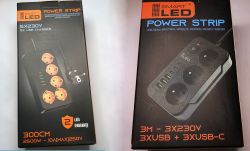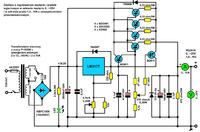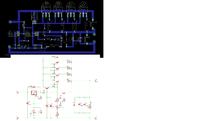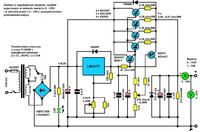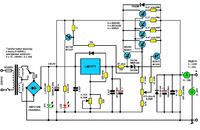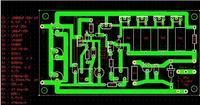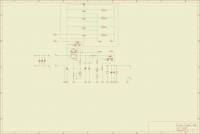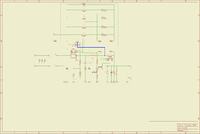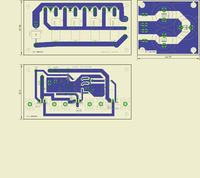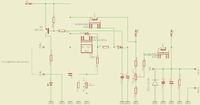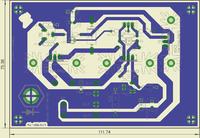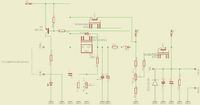Hi,
I have assembled the power supply, so far without the housing

. I used a 250VA 2x17V transformer
I thought that I would have no problems regulating the current? ... (current limitation? ..) However, like the others, I do not have current regulation at all. Elements according to the scheme. Since Łaciaty has already tested 0.33R resistors, I went with a "thick pipe"

and mounted 0.1R emitters. However, no effect so far. I still have 0.15R 0.10R in stock, but something and it seems that replacing them will not change the state of affairs.
I tested the power supply under a load from 0.5A to 2.5A. The temperature of the BD249 transistors is within 38 C. What's interesting, the current control potentiometer is also slightly warm. LM317 and BD 911 as cold as the Arctic

. I would like to add that I read the current using a digital meter, where it is connected to the positive branch (ammeter).
And what's next...

how to live ..., replace emitter resistors? .. change the meter to an ordinary analog pointer? .. What should the ammeter show when turning the potentiometer 470R; current protection threshold value? whether at the moment the value of the current consumption by the connected receiver.
Krzysiek, do you have any tips? ideas?... :D
.......
I "discovered" something

... Because my power supply consists of separate modules, that is, separately; driver board and separate board with executive transistors which are connected with 1.5mm2 wires, I disconnected the executor module from BD249. There are two BD911 and LM317 on the driver's board and the whole stall

with potentiometers for adjustment.
I connected a receiver for testing purposes and it consumes only 200mA. And what is happening ..

Suddenly I can adjust the voltage range, albeit only from 1.20V to 17V, but simultaneously turning the potentiometer to the current, I have a range of 0-200mA. I do not want to connect a larger receiver without BD249, but you can see that the idea of regulation is kept, ..... but why does it not work in conjunction with BD249 transistors? .......

.................
I changed the emitter resistors to 0.15R, reconnected the executive module, loaded the receiver with a consumption of 0.5A and ...? ...

no current regulation.
End of ideas, .. I'm going for a beer







